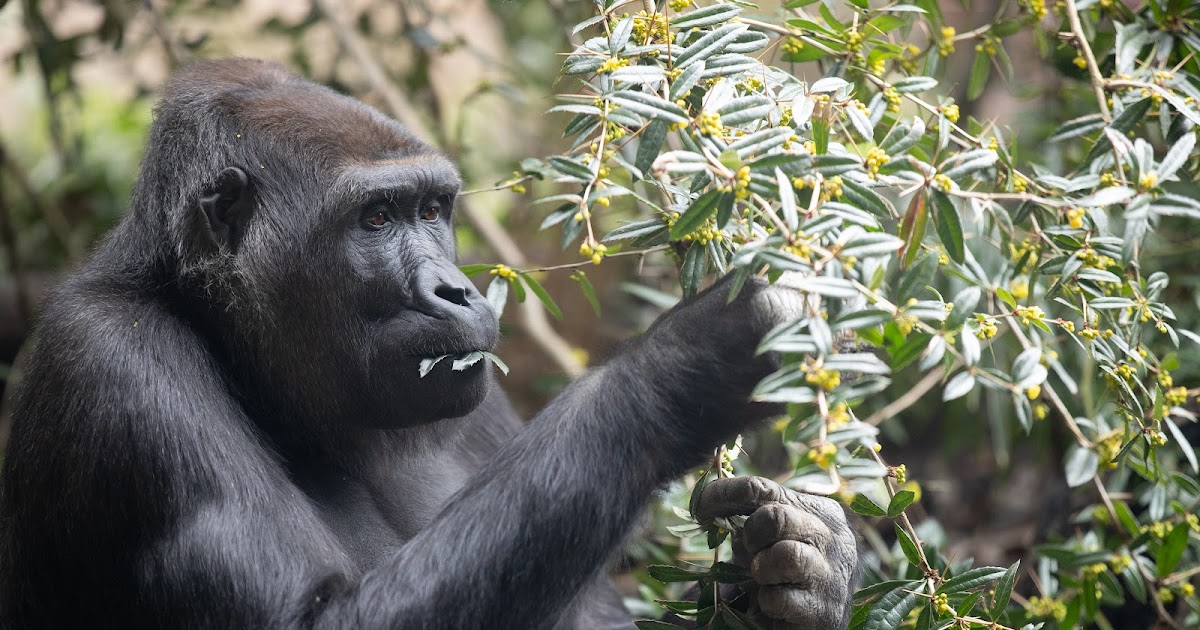Summary of Kitoko, Zuna and Yola are growing up gorilla:
The post, authored by Elizabeth Bacher, provides an update on the gorilla family at Woodland Park Zoo. The focus is on the younger gorillas, Zuna and Kitoko, who recently celebrated their 4th and 5th birthdays, respectively. Zuna is described as independent and socially adept, known for her cleverness and nest-building skills, while her half-brother, Kitoko, is energetic and a bit mischievous, frequently testing boundaries and engaging in playful antics that sometimes annoy his family members.
The family dynamics are explored, highlighting the close bonds between Zuna, her mother Nadiri, and sister Yola, as well as Kitoko’s relationship with his mother Uzumma, the group’s dominant female. Yola, now a young adult at 9.5 years, often protects her younger sister from Kitoko’s pranks. The post also mentions Akenji, an aunt who is protective of Zuna but wary of Kitoko’s antics to avoid conflict with Uzumma.
Kwame, the silverback of the group, maintains positive relationships with all the female gorillas and balances his role between training sessions and managing family disagreements. Both Zuna and Kitoko participate in educational training sessions with the zookeepers, who ensure their health and well-being. Overall, the gorilla family is thriving, with anticipation of more growth and playful interactions among the young gorillas in the future. An update on another gorilla group, Nadaya’s, is expected next.
- The developmental journeys of young gorillas Kitoko, Zuna, and Yola within a family troop.
- The roles of personality, social dynamics, and hierarchy in the gorilla troop at Woodland Park Zoo.
- The impact of behavioral traits and familial bonds on gorilla development stages and interactions.
- Educational insights into gorilla behavior, conservation, and the roles of zoos in wildlife preservation.
- The significance of individualized care and training in wildlife management and conservation efforts.
Gorillas are among the closest relatives to humans, sharing 98% of our DNA, which makes observing their development incredibly insightful for understanding social structures and behaviors similar to ours. At Woodland Park Zoo, the growth of young gorillas Kitoko, Zuna, and Yola provides a compelling narrative about the balance between individuality and social dynamics in a family troop.
Kitoko is a boisterous young gorilla, reveling in play and discovery, characterizing the curiosity typical of young males. As he develops from a juvenile into a blackback – a stage marking the transition into adulthood for male gorillas – his behavior is marked by energy and the desire to explore boundaries. This stage is crucial as Kitoko learns the nuances of gorilla social life and the importance of hierarchy. His antics often test the patience of the group, mirroring behaviors seen in young male gorillas in the wild, who must eventually leave their birth group to either join bachelor groups or start their own troop.
Contrasting with her playful brother, Zuna exhibits a sharper sense of independence and social awareness. At just four years old, her cleverness and individuality are already apparent. She skillfully navigates the social landscape, learning from her mother and other females in the troop. Zuna’s adeptness at nest building and her ability to interact harmoniously within the troop reflect her growing strategic understanding of gorilla sociability. Her bond with her mother Nadiri and her older sister Yola highlights the strong matrilineal relationships that form a gorilla troop’s backbone.
Yola, the eldest of the trio, has matured into a young adult and plays a pivotal role in mediating sibling dynamics. Her presence offers protection and companionship to Zuna, especially during playful but sometimes rough interactions with Kitoko. Yola’s interactions with dominant adults like Uzumma also suggest her growing confidence and understanding of gorilla politics, where maintaining harmony is often a test of skill in tactful communication and subtle negotiation.
The family dynamics are further enriched by the interactions among the adults. Nadiri, despite being lower in the hierarchy, is supported by her daughters, potentially changing future power dynamics within the group. Kwame, the group’s silverback, balances his role as protector and disciplinarian while engaging in play with his offspring, ensuring they remain integrated and secure.
These observations provide a snapshot of the intricate social structure of gorilla groups, offering parallels to human social systems. The focus on nurturing relationships underscores the importance of social bonds in stress management and cohesive group living—a testament to the complexities of their social structures.
Beyond social dynamics, the care and training provided by the zoo play vital roles in the wellbeing of these gorillas. Training sessions serve both as enrichment and health management tools, facilitating voluntary participation in activities like nail trimming or health checks. Such interactions are not merely functional but deepen the trust between humans and gorillas. This trust is essential for effective care, as it reduces stress and creates opportunities for in-depth health assessments.
Moreover, the zoo’s environment offers educational insights and occasions to emphasize conservation efforts necessary for gorilla survival. As western lowland gorillas face habitat loss and poaching in the wild, the role of zoos becomes critical. They not only serve as refuges but also as ambassadors for raising awareness and securing the future of these magnificent creatures.
In summary, watching Kitoko, Zuna, and Yola grow offers a window into the fascinating complexities of gorilla life. These interactions highlight the importance of social bonds, the individual personalities of animals, and the significant role that zoos play in conservation and education. Through their careful observation and management, institutions like the Woodland Park Zoo ensure that each gorilla’s journey is documented and shared, fostering a greater understanding of these remarkable animals and our responsibilities in preserving their natural spaces and ensuring their survival for future generations.

